Multinational Federated Learning Approach to Train ECG and Echocardiogram Models for Hypertrophic Cardiomyopathy Detection
- PMID: 35916132
- PMCID: PMC9439630
- DOI: 10.1161/CIRCULATIONAHA.121.058696
Multinational Federated Learning Approach to Train ECG and Echocardiogram Models for Hypertrophic Cardiomyopathy Detection
Abstract
Background: Novel targeted treatments increase the need for prompt hypertrophic cardiomyopathy (HCM) detection. However, its low prevalence (0.5%) and resemblance to common diseases present challenges that may benefit from automated machine learning-based approaches. We aimed to develop machine learning models to detect HCM and to differentiate it from other cardiac conditions using ECGs and echocardiograms, with robust generalizability across multiple cohorts.
Methods: Single-institution HCM ECG models were trained and validated on external data. Multi-institution models for ECG and echocardiogram were trained on data from 3 academic medical centers in the United States and Japan using a federated learning approach, which enables training on distributed data without data sharing. Models were validated on held-out test sets for each institution and from a fourth academic medical center and were further evaluated for discrimination of HCM from aortic stenosis, hypertension, and cardiac amyloidosis. Last, automated detection was compared with manual interpretation by 3 cardiologists on a data set with a realistic HCM prevalence.
Results: We identified 74 376 ECGs for 56 129 patients and 8392 echocardiograms for 6825 patients at the 4 academic medical centers. Although ECG models trained on data from each institution displayed excellent discrimination of HCM on internal test data (C statistics, 0.88-0.93), the generalizability was limited, most notably for a model trained in Japan and tested in the United States (C statistic, 0.79-0.82). When trained in a federated manner, discrimination of HCM was excellent across all institutions (C statistics, 0.90-0.96 and 0.90-0.96 for ECG and echocardiogram model, respectively), including for phenotypic subgroups. The models further discriminated HCM from hypertension, aortic stenosis, and cardiac amyloidosis (C statistics, 0.84, 0.83, and 0.88, respectively, for ECG and 0.93, 0.94, 0.85, respectively, for echocardiogram). Analysis of electrocardiography-echocardiography paired data from 11 823 patients from an external institution indicated a higher sensitivity of automated HCM detection at a given positive predictive value compared with cardiologists (0.98 versus 0.81 at a positive predictive value of 0.01 for ECG and 0.78 versus 0.59 at a positive predictive value of 0.24 for echocardiogram).
Conclusions: Federated learning improved the generalizability of models that use ECGs and echocardiograms to detect and differentiate HCM from other causes of hypertrophy compared with training within a single institution.
Keywords: cardiomyopathy, hypertrophic; echocardiography; electrocardiography; machine learning.
Figures
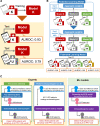
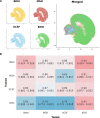
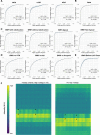
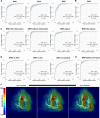
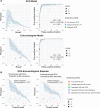
References
-
- Seidman JG, Seidman C. The genetic basis for cardiomyopathy from mutation identification to mechanistic paradigms. Cell. 2001;104:557–567. doi: 10.1016/s0092-8674(01)00242-2 - PubMed
-
- Maron BJ. Clinical course and management of hypertrophic cardiomyopathy. N Engl J Med. 2018;379:655–668. doi: 10.1056/NEJMra1710575 - PubMed
-
- Ommen SR, Mital S, Burke MA, Day SM, Deswal A, Elliott P, Evanovich LL, Hung J, Joglar JA, Kantor P, et al. . 2020 AHA/ACC guideline for the diagnosis and treatment of patients with hypertrophic cardiomyopathy. Circulation. 2020;142:e558–e631. doi:10.1161/CIR.0000000000000937 - PubMed
-
- Iacopo O, Artur O, Roberto B-V, Theodore PA, Ahmad M, Pablo G-P, Sara S, Neal KL, Matthew TW, Anjali O, et al. . Mavacamten for treatment of symptomatic obstructive hypertrophic cardiomyopathy (EXPLORER-HCM): a randomised, double-blind, placebo-controlled, phase 3 trial. Lancet. 2020;396:759–769. doi: 10.1016/S0140-6736(20)31792-X - PubMed
Publication types
MeSH terms
LinkOut - more resources
Full Text Sources
Medical

